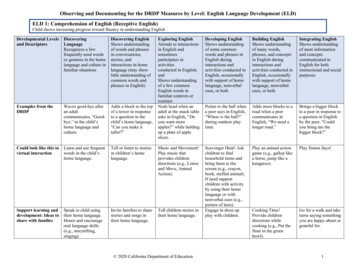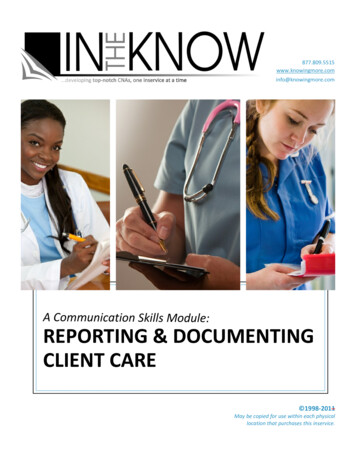
Transcription
mA Communication Skills Module:REPORTING & DOCUMENTINGCLIENT CARE 1998-2011May be copied for use within each physicallocation that purchases this inservice.
Developing Top-Notch CNAs, One Inservice at a TimeA Communication Skills Module:Inside ThisInservice:Reporting & Documenting Client CareWhy Is DocumentationImportant?2What Do You Document?3Making Observations4Rules of GoodDocumentation5-7Documentations inDifferent SettingsLegal IssuesFinal Do’s and Don’ts ofDocumentation89-1011WHAT HAPPENED TO CAROLINE?Caroline, a 76 year old woman arrivedat the nursing home to recover fromhip surgery that resulted from a fall athome. The routine surgery was doneat the hospital without complications.Upon arrival at the nursing home, anassessment was completed by thenurse, a care plan was written and thenursing assistant helped Caroline getsettled in for her stay.Orders were written for Caroline to: Ambulate to bathroom and inhalls 3 to 4 times per day, Attend therapy sessions andperform hip exercises, Wear elastic stockings, and Continue to perform cough anddeep breathing exercises.After three days, Caroline wasdoing great. She was well on herway to regaining herindependence. But, thensomething happened. 2012 In the Know, Inc.www.knowingmore.comMay be copied for use withineach physical location thatpurchases this inservice fromIn the Know. All other copyingor distribution is strictlyprohibited.Caroline removed her elasticstockings for a shower beforebed. After the shower, she feltsome pain in her leg, but didn'treport it and went to bed withoutthe stockings.That night, the chart indicatedthat Caroline was sleepingcomfortably, no swelling, redness orpain on the affected leg and that theelastic stockings were on.In the morning, Caroline complainedof feeling dizzy and was unable to getout of bed. Her vital signs indicated arapid heart rate and rapid, shallowbreathing.The abnormal vitals weredocumented correctly, but the nursewas not given an oral report anddidn't see the data until later thatmorning.When the nurse arrived in the roomshe found Caroline. . . dead. Carolinehad suffered a deep vein thrombosisor DVT (a blood clot in the leg). TheDVT became dislodged andtraveled to Caroline's lungs.So, what went wrong?Could this tragedy havebeen avoided?Keep reading to learnwhy accurate and timelydocumentation is soimportant. Find out whatyou can do to make suresomething like this doesnot happen to yourclients.
A Communication Skills Module: Reporting & Documenting Client Care 2012 In the Know, Inc.Page 2WHY IS DOCUMENTATION SO IMPORTANT?Did you know that in long term care (home health andSNF). . . the facility or agency pays up front for the careof each client. Then, the facility or agency is reimbursed for thespecific care you provide after the care has alreadybeen provided and documented.It’s important to note that payment will be madebased on the daily abilities of the client. This meanspayments are based on estimates of the actual stafftime it should take to perform the care required byyour client. This is different from hospitals which are paid a singlepayment for each episode of care, regardless of howmuch care you provide. So who decides how much your workplace will bereimbursed for the care you provide? YOU DO!Daily abilities are usually assessed over a period ofa few days. So, if your client ambulates unassistedone day, but needs help the next—you shouldreport exactly what happens each day. The carewill be reimbursed based on the highest level ofcare needed during the period.Every time you provide care for your client, the activityis “scored” according to the amount of interventionyour client needs.Please Note: If you are providing care for clientswithout documenting thoroughly and carefully—youremployer may not get reimbursed for your work.For example:In contrast, if you are documenting care that you didnot perform, your employer may not getreimbursed, and WILL POSSIBLYbe fined for the false records.ActivityScoring CriteriaScoreBathingRequires no assistance0Requires stand-by assistance2Requires full assistance3Requires full assistance-twocaregivers4The documentation you provide is reviewed andscored (as above) and sent to Medicare/Medicaid forreimbursement.The total score determines the clients “AssistanceLevel” and also determines how much the companywill be reimbursed for the care of that client.The more thorough your documentation, the easier itwill be for the nurse to score the assistance level ofyour client.Both situations result in afinancial loss. And, a loss foryour employer is a loss foryou, your clients andyour co-workers!So, this is why it isvery important foryou to alwaysdocument: Thoroughly, Accurately, and In a timely manner!Grab your favorite highlighter! As you read through thisinservice, highlight five things you learn that you didn’t knowbefore. Share this new information with your supervisorand co-workers!
A Communication Skills Module: Reporting & Documenting Client Care 2012 In the Know, Inc.Page 3WHAT DO YOU DOCUMENT?Whether you write it down or tell someone, your report shouldinclude:Observations Observations are the facts and events that you notice as yougo about your daily work. (See page three for more aboutmaking observations.)Daily MeasurementsYou may be ordered to record your client’s: Vital signs Weight Intake and Output Blood sugar levelSafety Issues This includes measures you took to ensure a client’s safety andany concerns you have about possible safety hazards in theclient’s environment.Client Statements & Complaints Document—in their exact words—any pertinent statementsyour clients make about how they are feeling.Thismay include statements about pain, appetiteor emotions.Be sure to report complaints. (Again, use theclient’s exact words.) Complaints help yourworkplace improve client care and/or findnew ways to meet a client’s needs.Unusual Events Report anything out of theordinary that happens while youare with a client. For example, besure to document if a client refusescare or if the heat in the client’s roomdoesn't work. (Notify your supervisoras soon as possible, too.)Your workplace should have a list of“approved abbreviations” you arepermitted to use in yourdocumentation.If you have not seen this list, ask yoursupervisor for it, today! Usingunapproved abbreviations can bedangerous, confusing and a big timewaster!For example, these twoabbreviations were found in actualmedical records. Can you figure outwhat they mean?1. THBNCS yesterday.2. Patient may get up AFAWG.ANSWERS: 1. There have been nochanges since yesterday. 2. Patient mayget up As Far As Wire Goes. FUNNY QUOTESFROM REALMEDICALRECORDS!MD orders:“Walk patient in hell,” and“Patient may shower with nurse.”
A Communication Skills Module: Reporting & Documenting Client Care 2012 In the Know, Inc.Page 4MAKING OBSERVATIONS When you observe your clients, you take note of facts and events.Observations may be subjective or objective. If a client tells you something, it is subjective information andshould be written inside quotation marks. (For example, Mrs.Smith states, “I feel like I’m getting a cold.”) Objective observations include things you can see, hear, smelland feel.WITH YOUR EYES, YOU CAN SEE A CLIENT’S: Daily activities such as eating, drinking, ambulating, dressingand toileting. Body posture. Skin color, bruising or swelling. Breathing pattern. Bowel movement (including the color, amount andconsistency). Urine (including color, amount and frequency). Facial expressions (such as smiling, frowning, grimacing orcrying).WITH YOUR EARS, YOU CAN HEAR A CLIENT’S: Raspy breathing. Crying or moaning. Coughing. Blood pressure. Sneezing.WITH YOUR NOSE, YOU CAN SMELL A CLIENT’S: Breath. Urine. Body odor. Bowel movement. Environment (such asan unusual chemicalodor or gas leak). Vomit.WITH YOUR FINGERS, YOU CAN FEEL A CLIENT’S: Skin temperature. Skin texture. Pulse.REMEMBER: Making observations involves using four senses:sight, hearing, smell and touch. State objectiveobservations as facts and write subjective observationsas statements in quotation marks.Years ago, charting about clientsconsisted of short (and rathermeaningless) observations such as:“The patient ate well.” or “The patientslept well.”No one expected to read anything ofimportance in notes written by nursesor nursing assistants.In the 1800’s, Florence Nightingalebegan to develop theories aboutnursing documentation and it beganto take on more meaning.More than 100 years later nursesbegan to develop their owndocumentation systems based onnursing diagnoses. Today, nurses, doctors, therapistsand insurance companies relyheavily on documentation youprovide to make importantdecisions about your client !FUNNY QUOTESFROM REALMEDICALRECORDS!“On the second day the knee wasbetter and on the third day it hadcompletely disappeared.”
A Communication Skills Module: Reporting & Documenting Client Care 2012 In the Know, Inc.Page 5THE RULES OF GOOD DOCUMENTATIONRULE #1: MAKE IT COMPLETE!Complete documentation is thorough and follows your workplacepolicies. In general, your documentation will be complete if youinclude: The correct date and time. The client’s correct name. The tasks you perform with each client and how the clientresponds to your care. Any changes you notice in a client’s condition. Any care that was refused by the client. Any phone calls or oral reports you made about the client to asupervisor. (Include the supervisor’s name.) Your signature and job title. Note: Check with your supervisor about how to complete thespecific forms used in your workplace.RULE # 2: KEEP IT CONSISTENT!Documentation is consistent when it remains true to: The client’s care plan. Physician and nursing orders. The observations that your coworkers have made about the sameclient. Your workplace policies.Your documentation will be consistent if you: Use workplace-approved medical terms and abbreviations. Perform your care according to each client’s care plan. If you areunable to follow the care plan on a particular day, document thereason why. Tell your supervisor right away if you notice changes in a client’scondition so that your observations can be shared with othermembers of the health care team. This keeps your coworkersfrom documenting incorrect information. For example, you takeyour client’s BP and it’s suddenly very high. If you don’t informthe nurse, she may document that the client’s vital signs arenormal. This can cause confusion and have a negative effect onclient care. If you make home health visits, be sure your documentationmatches the visit frequency ordered by the physician.Daytime television bombards us withads from lawyers offering freeconsultations to look over medicalrecords for errors. This has led to anincrease in lawsuits and medicalmalpractice claims.These claims are expensive and driveup healthcare costs for EVERYONE! Personal access to medical recordsis a right that cannot be denied. Should commercials for lawyerswho file malpractice claims beregulated? What about theirrights? What would you do if you or aloved one suffered an illness orinjury as a result of adocumentation error?Share your thoughts with yourco-workers and find out how theywould solve the problem.FUNNY QUOTESFROM REALMEDICALRECORDS!“She has had no rigors or shakingchills, but herhusband states she wasvery hot in bed last night. “
A Communication Skills Module: Reporting & Documenting Client Care 2012 In the Know, Inc.Page 6THE RULES OF GOOD DOCUMENTATION - continuedRULE #3: KEEP IT LEGIBLERemember, the purpose of documentation is to communicate withother members of the health care team. (If you are the only person whocan read your handwriting, your documentation won’t communicateanything to anybody!) Use a black or blue ballpoint pen. (The ink from felt tip pens tendsto “bleed”.) Watch your handwriting . . . messy documentation could comeback to haunt you in a lawsuit. Print with block letters. Cursive handwriting tends to be hard toread and should not be used in a medical chart.Flow sheets are often used as a quick way to document vital signs,weights and other tasks. If you use flow sheets, make sure they arelegible. Here are a couple of tips: Fill out the flow sheet properly. For example, do you circlenumbers or words on the flow sheet? Or, are you supposed tomake marks like X’s or checkmarks? Don’t try to cram long narrative documentation onto a flow sheet.RULE #4: MAKE IT ACCURATEDocumentation is accurate when it is true. Your documentation willbe accurate if you: Use appropriate medical terms and abbreviations that have beenapproved by your workplace. Use correct spelling and proper English. Double check that you’ve written down the correct client name(and ID number, if required). Handle errors correctly. (See page 10.) Record only the facts.not your opinions about those facts. Forexample, if your client seems dizzy and confused, don’t write whatyou guess to be true, like “Client acts like she’s on drugs”. Instead,stick to the facts, like “Client is unable to stand up without assistanceand called me by her mother’s name several times”. Record what a client tells you by quoting his exact words. Forexample: If your client says, “I want my daughter to visit”, don’t putwhat he said in your own words such as “client misses his daughter”.That’s not really what he said!THE ART OF ORAL REPORTSIf you are not comfortable giving oralreports . . . here’s your chance topractice! Prepare a “shift report” about aclient you cared for today. Be sureto include any changes incondition, ongoing orders, neworders, incidents, and any eventsfor which the next shift will need tobe prepared.In addition to shift reports, you arerequired to report orally to the nurse incertain circumstances. Make a list of at least 10 situationsthat require an immediate oralreport in addition to your normaldocumentation.Share your shift report and your list often situations with your supervisor forfeedback!FUNNY QUOTESFROM REALMEDICALRECORDS!“She slipped on the iceand apparently her legs went inseparate directions inearly December.“
A Communication Skills Module: Reporting & Documenting Client Care 2012 In the Know, Inc.Page 7THE RULES OF GOOD DOCUMENTATION - continuedRULE #5: FINISH ON TIME!Documenting on time means writing information down as it happensand turning in your paperwork when it is due. Your documentationwill be on time if you: Write information down immediately. For example, if you take aclient’s vital signs, document them right away. Don’t wait until youfinish your care and leave the room. The longer you wait, the morelikely you are to forget some of the details. Be sure you make note of exact times on your documentation.Don’t guess at the time or put a general time frame like “Day Shift”. Note the time of your arrival and your departure from each client’shome (if you make home health visits). Use the proper time format according to your workplace policy.For example, some health care organizations use a twelve hourclock, noting whether it’s AM or PM. Others usea twenty-four hour clock—also called militarytime. Using military time, 6:00PM is written as1800. Most home health aides are required todocument their care on visit notes. If youcare for clients in their homes, be sure tocomplete your visit notes at the time ofeach home visit. Don’t wait until the endof the day to fill out visit notes on all yourclients. Be sure to meet the deadlines forturning in your visit notes at the office.(Remember: completing visit notes on timehelps you and your workplace get paid!)WHO CARES ABOUT YOUR DOCUMENTATION?Your documentation may be read by a number of different people,including:Your coworkers and supervisors Quality improvementpersonnel State and/or Joint Commission Medicare and insurancesurveyorscompany reviewers Researchers Lawyers and judgesHOW DO YOU HANDLE ERRORS?1. What would you do if you left outimportant information in yourclient’s chart? For example, whiledriving home from work, yousuddenly recall something yourcompletely forgot to chart!2. How do you correct a mistake?For example, you charted yourclient’s output as 2700mL insteadof 270mL.3. What should you do if you noticesomeone else made a mistake inthe chart? For example, you noticethe nurse documented that the clientwas NPO when the client was not.Share your answers with yourco-workers and find out how theywould solve the problem.If you can’t answer these questions,ask your supervisor for your officialworkplace policy on handling errors.FUNNY QUOTESFROM REALMEDICALRECORDS!“The patient's past medical historyhas been remarkably insignificantwith only a 40 pound weight gainin the past three days.”
A Communication Skills Module: Reporting & Documenting Client Care 2012 In the Know, Inc.Page 8DOCUMENTATION IN DIFFERENT CLINICAL SETTINGSACUTE CARE: Care plans or critical pathways (used to outline the client’s needs). The Kardex (used to chart activities, treatments and medications). Progress notes (for documenting changes in the client’s condition). Flow sheets or graphic forms (for tracking vital signs and weights).Special Tips For Acute Care Documentation: Patients in acute care settings tend to be quite sick. If you are orderedto document vital signs every four hours, it’s important to take thevitals—and document the results—on time.Remember that sick patients can become sicker in a matter of minutes.And, as they get better, they can be discharged on short notice. It’svery important to complete documentation on time.HOME HEALTH CARE: Plan of care (may be known as a “486” which is a specialMedicare/Medicaid care plan). Home health aide care plan (outline the assignment for each client). Daily or weekly visit note (for documenting care at each visit).Special Tips For Home Health Documentation: Home health clients on Medicare must be homebound—and mustneed help with bathing—to receive the services of a home health aide.Your documentation should show that your client meets theserequirements. However, if your client has already bathed when youarrive, document the reason and tell your supervisor right away.Take extra care to keep your documentation confidential—especiallyin the client’s home (where friends or neighbors might see it) and inyour car.LONG TERM CARE: Minimum Data Set or MDS (used to evaluate the needs of clients). ADL checklists or flow sheets (tracks daily care given to each client).Special Tips For LTC Documentation: Some LTC residents may need skilled care (which requires morefrequent documentation). Others receive a lower level of care (whichrequires less frequent documentation). A resident’s condition may change slowly over time. Always observeand document even slight physical and mental changes. Most LTC facilities are required to keep a record of visits and phonecalls from family or friends. (The facility may even face a fine if itdoesn’t comply!) You may be asked to help keep track of your client’svisitors and calls.WRITING AN INCIDENT REPORTAn incident is an unexpected event thatoften involves an accident or an injury.The injured person may be anemployee, a family member, a client oryourself.An incident report should include: The date and time of the incident. The mental and physical conditionof the person involved. The result of the incident (scratch,broken bone, back injury). Actions taken to help the personinvolved. Suggestions for change so theincident does not occur again.Only include the facts in an incidentreport. For example, if Mr. H. reportsbeing hit by Mr. G., but you did not see ithappen . . . you would not report “Mr. G.hit Mr. H.” You would report “Mr. G.reported being hit by another client.”FUNNY QUOTESFROM REALMEDICALRECORDS!“Bleeding started in therectal area and continued allthe way to Los Angeles.”
A Communication Skills M
877.809.5515 www.knowingmore.com info@knowingmore.com REPORTING & DOCUMENTING: CLIENT CARE 1998-2011 May be copied for use within
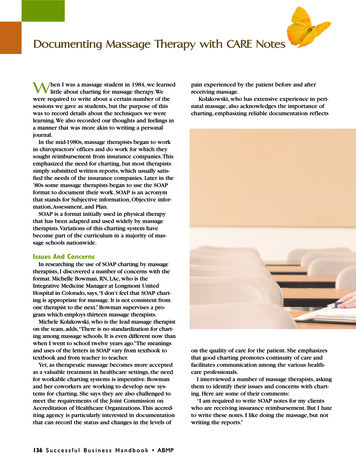
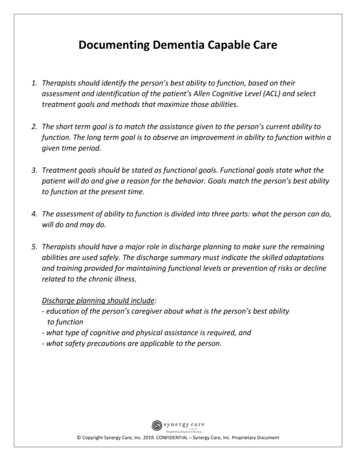

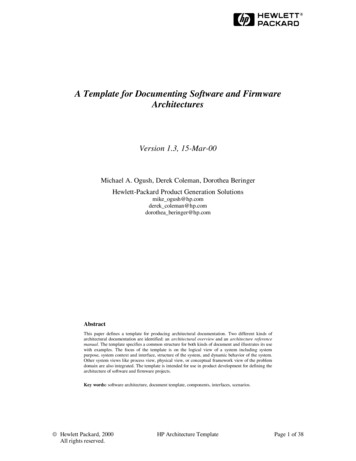
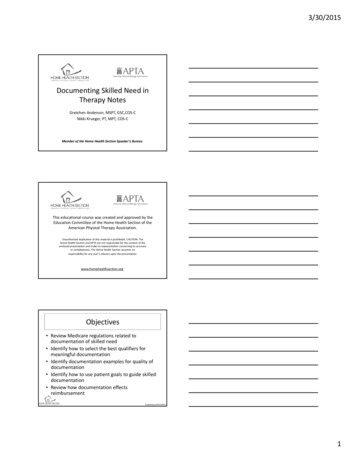
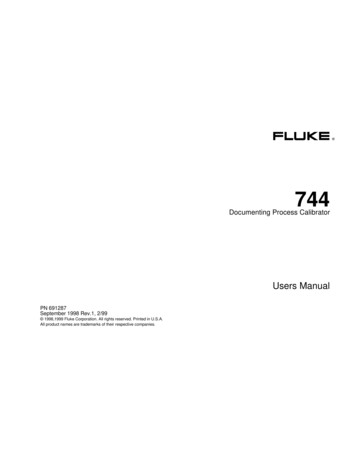
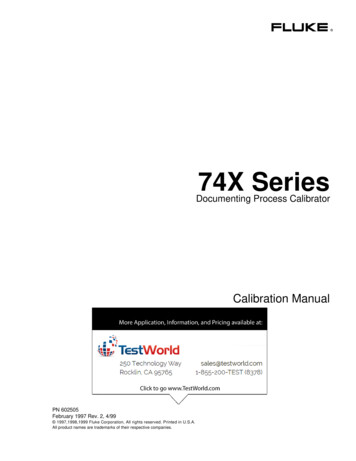
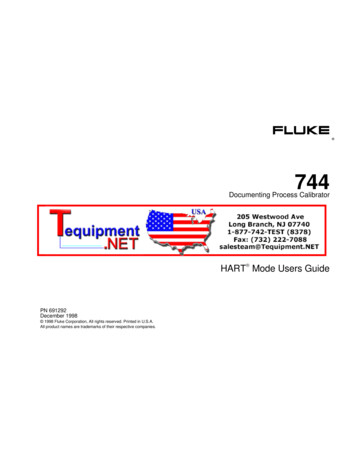
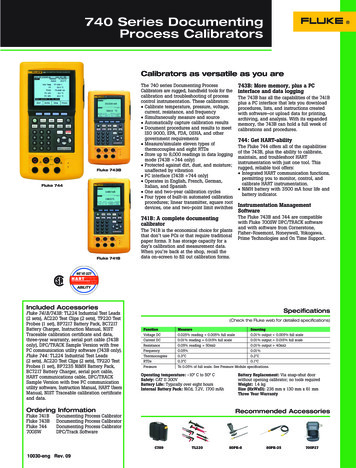
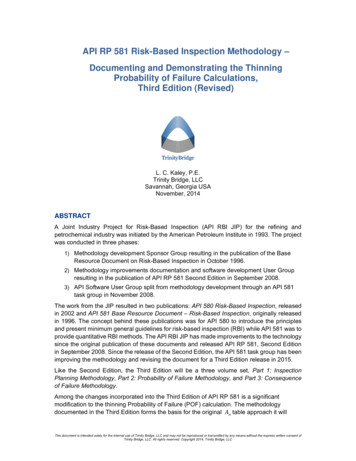
![[Final] Documenting the University of Pennsylvania’s .](/img/9/csgraubard-documenting-the-university-of-pennsylvanias-connection-to-slavery.jpg)
